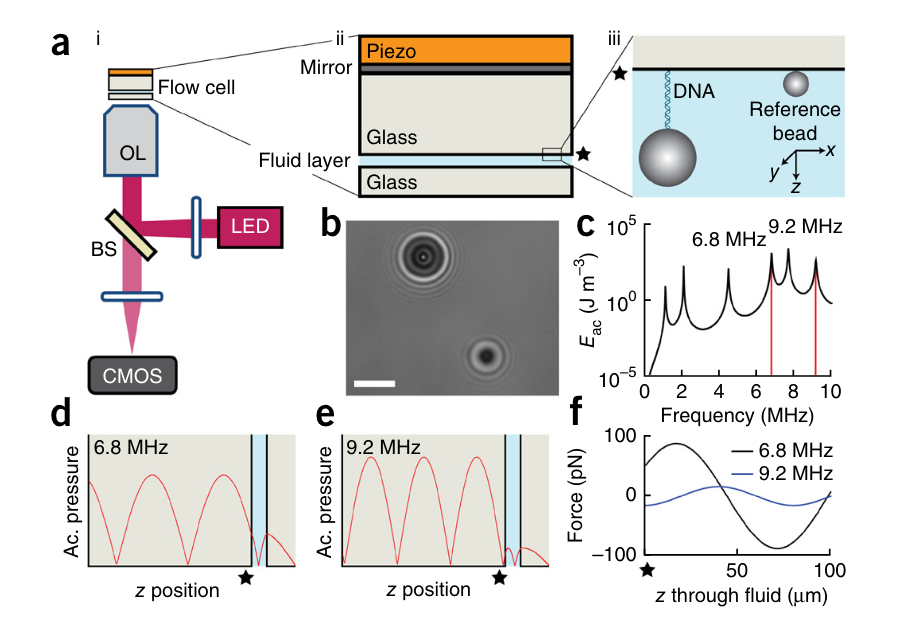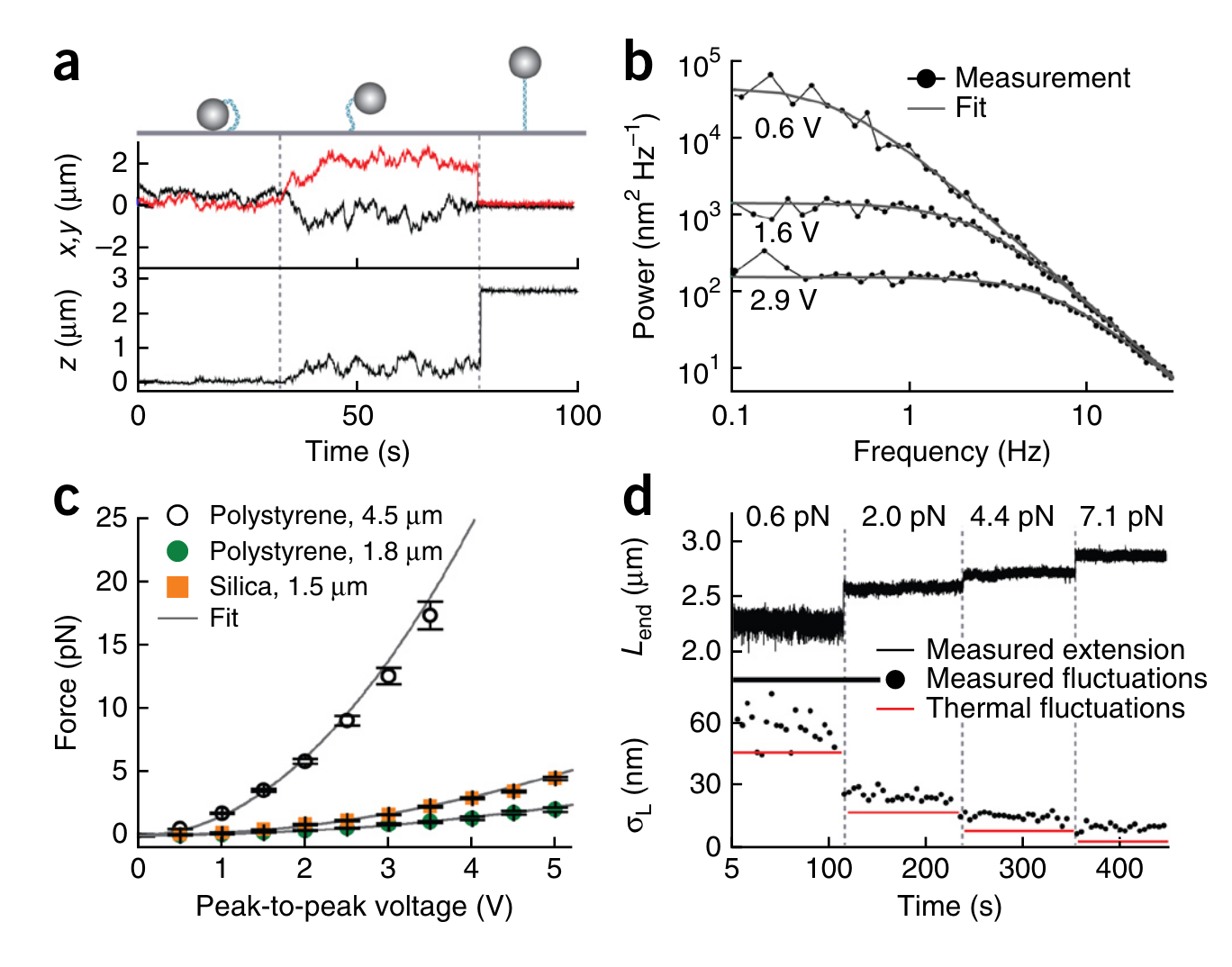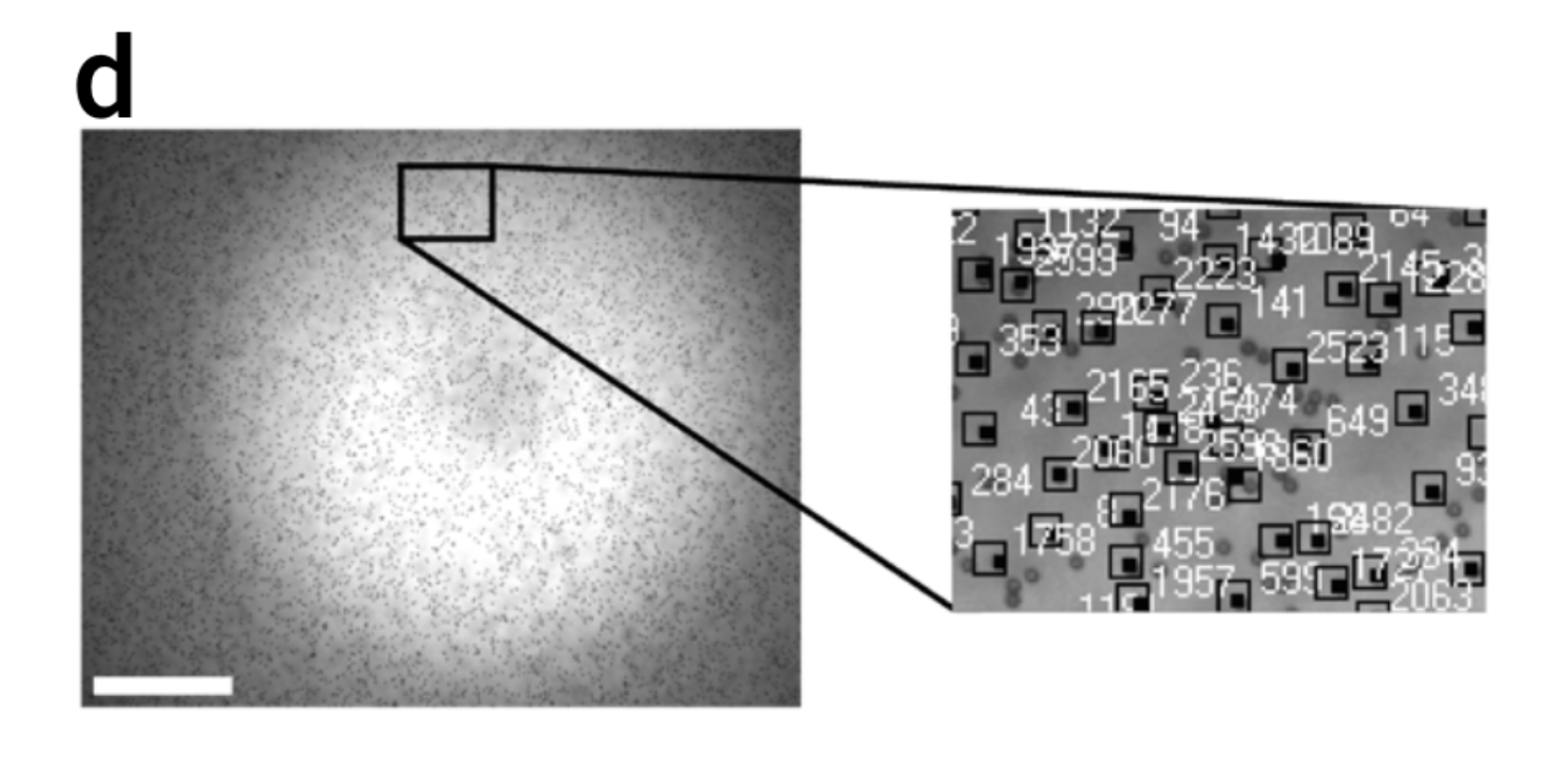Literature/202310112003 acoustic force spectroscopy for single-molecule applications
- Source: [@sitters2015Acoustic force spectroscopy]
- Tags: #acoustic-force-spectroscopy #biomolecules #avidity
The idea of acoustic force spectroscopy relies on a relatively simple principle of Acoustic trapping. A standing pressure wave is created in a medium and particles will go towards the nodes. Particularly, in the setup described (figure below) the standing wave creates a planar structure, and therefore the trap only acts in 1-D.
 The immediate idea is to use the setup to perform parallel measurements of trapped beads linked to the surface via a dsDNA molecule. The results are as expected (nothing particularly new, just a proof of principle)
The immediate idea is to use the setup to perform parallel measurements of trapped beads linked to the surface via a dsDNA molecule. The results are as expected (nothing particularly new, just a proof of principle)

And to show the parallelization capabilities, the authors create a series of histograms of distribution of rupture forces, but importantly, they show an example of how their data looks like:

Lumicks commercializes this technology under the name of z-movi.
Backlinks
These are the other notes that link to this one.
